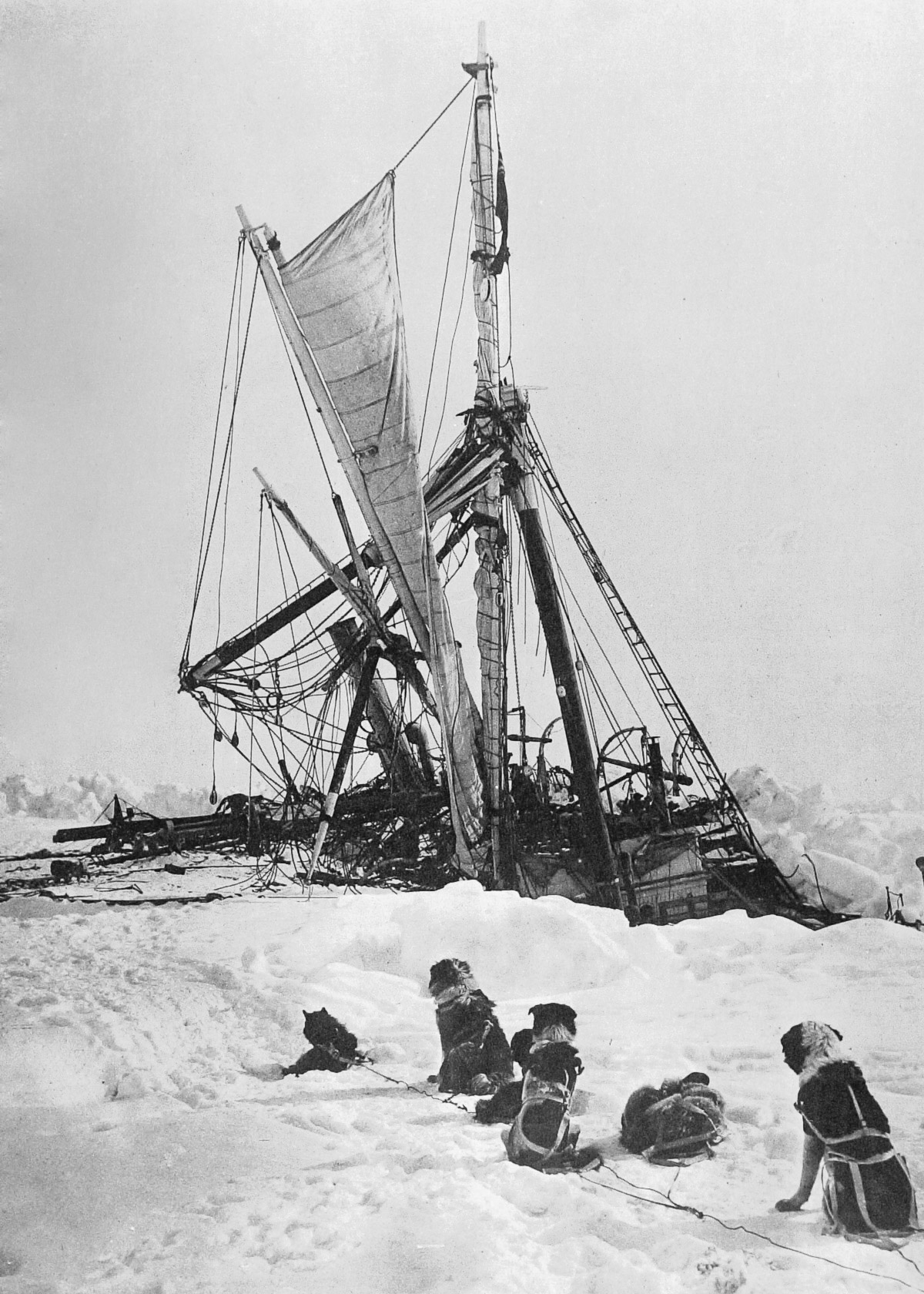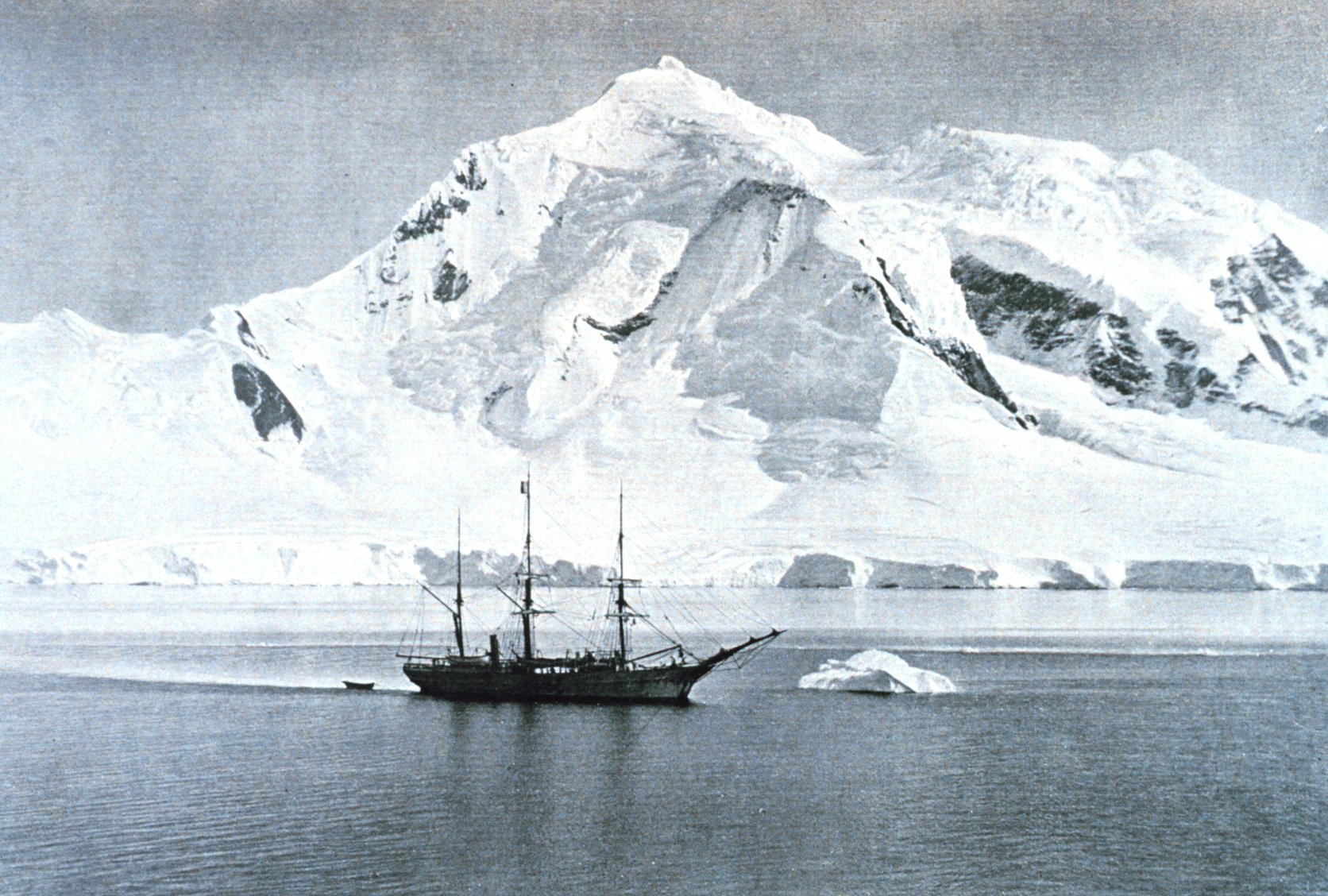|
Endurance (1912 Ship)
''Endurance'' was the three-masted barquentine in which Sir Ernest Shackleton and a crew of 27 men sailed for the Antarctic on the 1914–1917 Imperial Trans-Antarctic Expedition. The ship, originally named ''Polaris'', was built at Framnæs shipyard and launched in 1912 from Sandefjord in Norway. After her commissioners could no longer pay the shipyard, the ship was bought by Shackleton in January 1914 for the expedition, which would be her first voyage. A year later, she became trapped in pack ice and finally sank in the Weddell Sea off Antarctica on 21 November 1915. All of the crew survived her sinking and were eventually rescued in 1916 after using the ship's boats to travel to Elephant Island and Shackleton, the ship's captain Frank Worsley, and four others made a voyage to seek help. The wreck of ''Endurance'' was discovered on 5 March 2022, nearly 107 years after she sank, by the search team Endurance22. She lies deep, and is in good condition. The wreck is designated a ... [...More Info...] [...Related Items...] OR: [Wikipedia] [Google] [Baidu] |
Weddell Sea
The Weddell Sea is part of the Southern Ocean and contains the Weddell Gyre. Its land boundaries are defined by the bay formed from the coasts of Coats Land and the Antarctic Peninsula. The easternmost point is Cape Norvegia at Princess Martha Coast, Queen Maud Land. To the east of Cape Norvegia is the King Haakon VII Sea. Much of the southern part of the sea is covered by a permanent, massive ice shelf field, the Filchner-Ronne Ice Shelf. The sea is contained within the two overlapping Antarctic territorial claims of Argentine Antarctica, the British Antarctic Territory, and also resides partially within the Antarctic Chilean Territory. At its widest the sea is around across, and its area is around . Various ice shelves, including the Filchner-Ronne Ice Shelf, fringe the Weddell sea. Some of the ice shelves on the east side of the Antarctic Peninsula, which formerly covered roughly of the Weddell Sea, had completely disappeared by 2002. The Weddell Sea has been deemed by ... [...More Info...] [...Related Items...] OR: [Wikipedia] [Google] [Baidu] |
Ole Aanderud Larsen
Ole Aanderud Larsen (18 December 1884 – 6 October 1964) was a ship designer and businessman from Norway. Larsen was born in Tønsberg and died in Sandefjord, in the county of Vestfold. Larsen is best known for designing the ''Endurance,'' the three-masted barquentine in which Sir Ernest Shackleton sailed for the Antarctic on the Imperial Trans-Antarctic Expedition The Imperial Trans-Antarctic Expedition of 1914–1917 is considered to be the last major expedition of the Heroic Age of Antarctic Exploration. Conceived by Sir Ernest Shackleton, the expedition was an attempt to make the first land crossing ... in 1914. Larsen was the first chairman and one of the founders of Jotun Group Private Ltd., a company started by Odd Gleditsch to sell specialized paints and coatings to the shipping industry. Jotun has since expanded worldwide and now sells a diverse range of paints and coatings for all kind of industries. References Related reading *Lansing, Alfred. (1999) ... [...More Info...] [...Related Items...] OR: [Wikipedia] [Google] [Baidu] |
Adrien De Gerlache
Baron Adrien Victor Joseph de Gerlache de Gomery (; 2 August 1866 – 4 December 1934) was a Belgian officer in the Belgian Royal Navy who led the Belgian Antarctic Expedition of 1897–99. Early years Born in Hasselt in eastern Belgium as the son of an army officer, de Gerlache was educated in Brussels. From a young age he was deeply attracted by the sea, and made three voyages in 1883 and 1884 to the United States as a cabin boy on an ocean liner. He studied Engineering at the Free University of Brussels. After finishing his third year in 1885, he quit the university and joined the Belgian Navy on 19 January 1886. After graduating from the nautical college of Ostend he worked on fishery protection vessels as second and third lieutenant. In October 1887 he signed on as seaman on the ''Craigie Burn'', an English ship, for a voyage to San Francisco, but the ship failed to round Cape Horn and was sold for scrap in Montevideo. He returned to Europe after spending time in Urugua ... [...More Info...] [...Related Items...] OR: [Wikipedia] [Google] [Baidu] |
Roald Amundsen
Roald Engelbregt Gravning Amundsen (, ; ; 16 July 1872 – ) was a Norwegian explorer of polar regions. He was a key figure of the period known as the Heroic Age of Antarctic Exploration. Born in Borge, Østfold, Norway, Amundsen began his career as a polar explorer as first mate on Adrien de Gerlache's Belgian Antarctic Expedition of 1897–1899. From 1903 to 1906, he led the first expedition to successfully traverse the Northwest Passage on the sloop ''Gjøa''. In 1909, Amundsen began planning for a South Pole expedition. He left Norway in June 1910 on the ship ''Fram'' and reached Antarctica in January 1911. His party established a camp at the Bay of Whales and a series of supply depots on the Barrier (now known as the Ross Ice Shelf) before setting out for the pole in October. The party of five, led by Amundsen, became the first to successfully reach the South Pole on 14 December 1911. Following a failed attempt in 1918 to reach the North Pole by traversing the ... [...More Info...] [...Related Items...] OR: [Wikipedia] [Google] [Baidu] |
Fridtjof Nansen
Fridtjof Wedel-Jarlsberg Nansen (; 10 October 186113 May 1930) was a Norwegian polymath and Nobel Peace Prize laureate. He gained prominence at various points in his life as an explorer, scientist, diplomat, and humanitarian. He led the team that made the first crossing of the Greenland interior in 1888, traversing the island on cross-country skis. He won international fame after reaching a record northern latitude of 86°14′ during his ''Fram'' expedition of 1893–1896. Although he retired from exploration after his return to Norway, his techniques of polar travel and his innovations in equipment and clothing influenced a generation of subsequent Arctic and Antarctic expeditions. Nansen studied zoology at the Royal Frederick University in Christiania and later worked as a curator at the University Museum of Bergen where his research on the central nervous system of lower marine creatures earned him a doctorate and helped establish neuron doctrine. Later, neuroscientist Sa ... [...More Info...] [...Related Items...] OR: [Wikipedia] [Google] [Baidu] |
Fram (ship)
''Fram'' ("Forward") is a ship that was used in expeditions of the Arctic and Antarctic regions by the Norwegian explorers Fridtjof Nansen, Otto Sverdrup, Oscar Wisting, and Roald Amundsen between 1893 and 1912. It was designed and built by the Scottish-Norwegian shipwright Colin Archer for Fridtjof Nansen's 1893 Arctic expedition in which the plan was to freeze ''Fram'' into the Arctic ice sheet and float with it over the North Pole. ''Fram'' is preserved as a museum ship at the Fram Museum in Oslo, Norway. Construction Nansen's ambition was to explore the Arctic farther north than anyone else. To do that, he would have to deal with a problem that many sailing on the polar ocean had encountered before him: the freezing ice could crush a ship. Nansen's idea was to build a ship that could survive the pressure, not by pure strength, but because it would be of a shape designed to let the ice push the ship up, so it would "float" on top of the ice. ''Fram'' is a three-masted sch ... [...More Info...] [...Related Items...] OR: [Wikipedia] [Google] [Baidu] |
Steam Engine
A steam engine is a heat engine that performs mechanical work using steam as its working fluid. The steam engine uses the force produced by steam pressure to push a piston back and forth inside a cylinder. This pushing force can be transformed, by a connecting rod and crank, into rotational force for work. The term "steam engine" is generally applied only to reciprocating engines as just described, not to the steam turbine. Steam engines are external combustion engines, where the working fluid is separated from the combustion products. The ideal thermodynamic cycle used to analyze this process is called the Rankine cycle. In general usage, the term ''steam engine'' can refer to either complete steam plants (including boilers etc.), such as railway steam locomotives and portable engines, or may refer to the piston or turbine machinery alone, as in the beam engine and stationary steam engine. Although steam-driven devices were known as early as the aeolipile in the f ... [...More Info...] [...Related Items...] OR: [Wikipedia] [Google] [Baidu] |
Square-rigged
Square rig is a generic type of sail and rigging arrangement in which the primary driving sails are carried on horizontal spars which are perpendicular, or square, to the keel of the vessel and to the masts. These spars are called ''yards'' and their tips, outside the lifts, are called the ''yardarms.'' A ship mainly rigged so is called a square-rigger. The square rig is aerodynamically the most efficient running rig (i.e., sailing downwind), and stayed popular on ocean-going sailing ships until the end of the Age of Sail. The last commercial sailing ships, windjammers, were usually square-rigged four-masted barques. History The oldest archaeological evidence of use of a square-rig on a vessel is an image on a clay disk from Mesopotamia from 5000 BC. Single sail square rigs were used by the ancient Egyptians, the Phoenicians, the Greeks, the Romans, and the Celts. Later the Scandinavians, the Germanic peoples, and the Slavs adopted the single square-rigged sail, with it bec ... [...More Info...] [...Related Items...] OR: [Wikipedia] [Google] [Baidu] |
Mast (sailing)
The mast of a sailing vessel is a tall spar, or arrangement of spars, erected more or less vertically on the centre-line of a ship or boat. Its purposes include carrying sails, spars, and derricks, and giving necessary height to a navigation light, look-out position, signal yard, control position, radio aerial or signal lamp. Large ships have several masts, with the size and configuration depending on the style of ship. Nearly all sailing masts are guyed. Until the mid-19th century, all vessels' masts were made of wood formed from a single or several pieces of timber which typically consisted of the trunk of a conifer tree. From the 16th century, vessels were often built of a size requiring masts taller and thicker than could be made from single tree trunks. On these larger vessels, to achieve the required height, the masts were built from up to four sections (also called masts). From lowest to highest, these were called: lower, top, topgallant, and royal masts. Giving the ... [...More Info...] [...Related Items...] OR: [Wikipedia] [Google] [Baidu] |
Chlorocardium Rodiei
''Chlorocardium rodiei'' (greenheart) is a species of flowering plant in the family Lauraceae. It is one of two species in the genus ''Chlorocardium''. It is native to Guyana and Suriname in South America. Other common names include cogwood, demerara greenheart, greenhart, ''ispingo moena'', ''sipiri'', ''bebeeru'' and ''bibiru''. It is an evergreen tree growing 15 to 30 m tall with a trunk diameter of 35 to 60 cm. The leaf, leaves are oppositely arranged and simple with smooth edges. The fruit is a drupe containing a single seed. The cyclic bisbenzylisoquinoline alkaloid rodiasine was first isolated from this species. The wood is extremely hard and strong, so hard that it cannot be worked with standard tools. It is durable in marine conditions, so it is used to build docks and other structures, and it was an early choice for fly fishing, fly fishing rods. An estimated 15 to 28% of the original population has been harvested. The species' use as a commercial timber began in ... [...More Info...] [...Related Items...] OR: [Wikipedia] [Google] [Baidu] |
Darkroom
A darkroom is used to process photographic film, to make prints and to carry out other associated tasks. It is a room that can be made completely dark to allow the processing of the light-sensitive photographic materials, including film and photographic paper. Various equipment is used in the darkroom, including an enlarger, baths containing chemicals, and running water. Darkrooms have been used since the inception of photography in the early 19th century. Darkrooms have many various manifestations, from the elaborate space used by Ansel Adams to a retooled ambulance wagon used by Timothy H. O'Sullivan. From the initial development of the film to the creation of prints, the darkroom process allows complete control over the medium. Due to the popularity of color photography and complexity of processing color film (''see C-41 process'') and printing color photographs and also to the rise, first of instant photography technology and later digital photography, darkrooms are dec ... [...More Info...] [...Related Items...] OR: [Wikipedia] [Google] [Baidu] |
Steam Yacht
A steam yacht is a class of luxury or commercial yacht with primary or secondary steam propulsion in addition to the sails usually carried by yachts. Origin of the name The English steamboat entrepreneur George Dodd (1783–1827) used the term "steam yacht" to describe the steamer ''Thames'', ex ''Duke of Argyle''. Her service on the river had first been advertised on 22 June 1815 as "Thames Steam Yacht", intended to emphasise how luxurious these vessels were. Earliest steam yachts The first two private steam yachts known were: * ''Endeavour'', wooden paddle steamer registered 28 January 1828 by builders Rawlinson and Lyon, Lambeth, 75’6” x 12’ x 7’2”, 25 tons with a 20 HP Maudslay patent oscillating engine with two cylinders 20in. dia. X 2 ft. stroke, and registered to the eminent English engineer Henry Maudslay, London on 21 February 1828, who used her as his private steam yacht. The eminent Scottish engineer James Nasmyth mentions a trip aboard her to Richmond ... [...More Info...] [...Related Items...] OR: [Wikipedia] [Google] [Baidu] |









.jpg)


